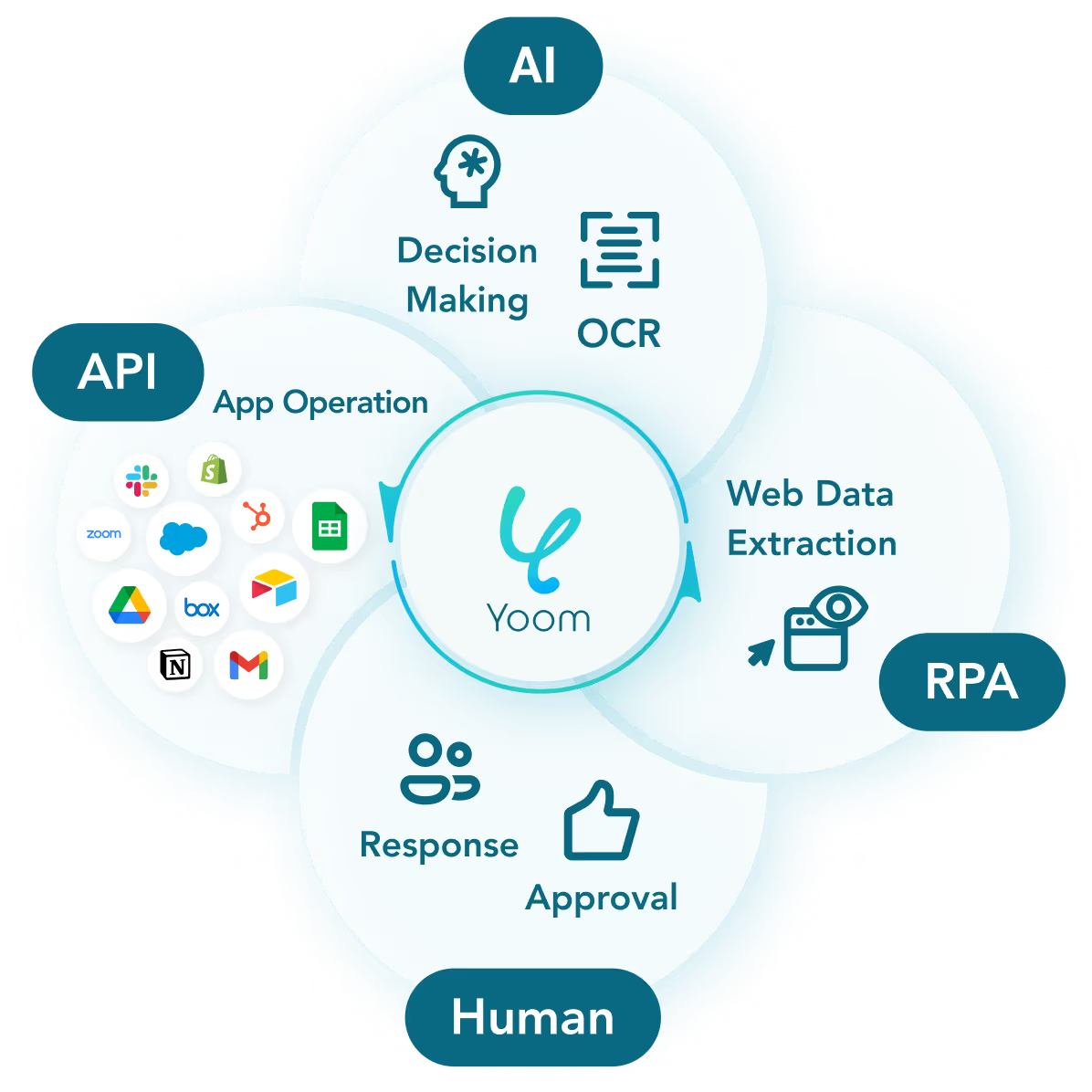
■Overview
The workflow "Add the recording URL to Notion and share it after a meeting ends on Google Meet" automates the organization and sharing of information after meetings, enhancing team efficiency. When a meeting ends on Google Meet, the recording URL is automatically added to Notion and notified to specified members, allowing for smooth link sharing. This eliminates the hassle of manual information management and keeps the workflow simple.
■Recommended for
■Benefits of using this template
Since the recording URL is automatically added to Notion and shared after a meeting ends on Google Meet, it eliminates the need for manual input and notifications.
After the meeting ends, the recording link is automatically added to Notion and shared, allowing immediate access to necessary information.
Automation prevents human errors in input and notifications, ensuring smooth information transmission.



 When a meeting ends
When a meeting ends
 When a meeting starts
When a meeting starts
 When a page is created or updated
When a page is created or updated
 When a database is created or updated
When a database is created or updated
 [Deprecated] When a page in a specific database is created or updated
[Deprecated] When a page in a specific database is created or updated
 When receiving a Webhook
When receiving a Webhook
 When a page is created (Webhook)
When a page is created (Webhook)
 When page content is updated (Webhook)
When page content is updated (Webhook)
 When a page is deleted (Webhook)
When a page is deleted (Webhook)
 When Page Properties are Updated (Webhook)
When Page Properties are Updated (Webhook)
 When a Comment is Created (Webhook)
When a Comment is Created (Webhook)
 When a Comment is Updated (Webhook)
When a Comment is Updated (Webhook)
 When a Comment is Deleted (Webhook)
When a Comment is Deleted (Webhook)
 When Database Content is Added or Updated (Webhook)
When Database Content is Added or Updated (Webhook)
 When a page in a specific data source is created or updated
When a page in a specific data source is created or updated
 Get Meeting Space Details
Get Meeting Space Details
 Create Meeting Space
Create Meeting Space
 Get Recording Information
Get Recording Information
 Get Transcription Information
Get Transcription Information
 Get List of Meeting Information
Get List of Meeting Information
 Retrieve a specific conference record
Retrieve a specific conference record
 Get Meeting Participant List
Get Meeting Participant List
 Get page details
Get page details
 Create Page
Create Page
 Append text to page
Append text to page
 Update Page Property (Text)
Update Page Property (Text)
 Update Page Property (Number)
Update Page Property (Number)
 Update Page Property (Select)
Update Page Property (Select)
 Update Page Property (Multi-select)
Update Page Property (Multi-select)
 Update Page Property (Date)
Update Page Property (Date)
 Update page property (Checkbox)
Update page property (Checkbox)
 Update page property (URL)
Update page property (URL)
 Update page property (Email)
Update page property (Email)
 When a meeting ends
When a meeting ends When a meeting starts
When a meeting starts Get Meeting Space Details
Get Meeting Space Details Create Meeting Space
Create Meeting Space Get Recording Information
Get Recording Information Get Transcription Information
Get Transcription Information Get List of Meeting Information
Get List of Meeting Information Retrieve a specific conference record
Retrieve a specific conference record Get Meeting Participant List
Get Meeting Participant List When a page is created or updated
When a page is created or updated When a database is created or updated
When a database is created or updated [Deprecated] When a page in a specific database is created or updated
[Deprecated] When a page in a specific database is created or updated When receiving a Webhook
When receiving a Webhook When a page is created (Webhook)
When a page is created (Webhook) When page content is updated (Webhook)
When page content is updated (Webhook) When a page is deleted (Webhook)
When a page is deleted (Webhook) When Page Properties are Updated (Webhook)
When Page Properties are Updated (Webhook) When a Comment is Created (Webhook)
When a Comment is Created (Webhook) When a Comment is Updated (Webhook)
When a Comment is Updated (Webhook) When a Comment is Deleted (Webhook)
When a Comment is Deleted (Webhook) When Database Content is Added or Updated (Webhook)
When Database Content is Added or Updated (Webhook) When a page in a specific data source is created or updated
When a page in a specific data source is created or updated Get page details
Get page details Create Page
Create Page Append text to page
Append text to page Update Page Property (Text)
Update Page Property (Text) Update Page Property (Number)
Update Page Property (Number) Update Page Property (Select)
Update Page Property (Select) Update Page Property (Multi-select)
Update Page Property (Multi-select) Update Page Property (Date)
Update Page Property (Date) Update page property (Checkbox)
Update page property (Checkbox) Update page property (URL)
Update page property (URL) Update page property (Email)
Update page property (Email) Update page property (Phone number)
Update page property (Phone number) Retrieve block information for a specific page
Retrieve block information for a specific page List users
List users Update page properties (Relation property)
Update page properties (Relation property) Add a sub-item to the specified record
Add a sub-item to the specified record Generate File Upload ID
Generate File Upload ID Upload file
Upload file Update Page Property (Files & media property)
Update Page Property (Files & media property) Download File
Download File Retrieve Page Information (List of File Info)
Retrieve Page Information (List of File Info) Search Pages and Databases by Title
Search Pages and Databases by Title Create Page from Database Template (Title Only)
Create Page from Database Template (Title Only) Add a Heading and Paragraph to a Page
Add a Heading and Paragraph to a Page Update Data Source Property Name
Update Data Source Property Name Update Page Property (Title)
Update Page Property (Title) Search text within a data source’s formula property
Search text within a data source’s formula property Append Text with Embedded URL to Page
Append Text with Embedded URL to Page